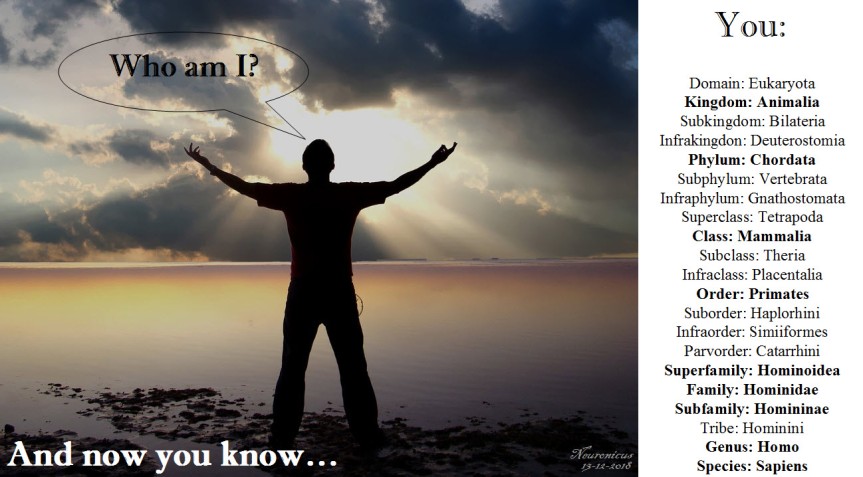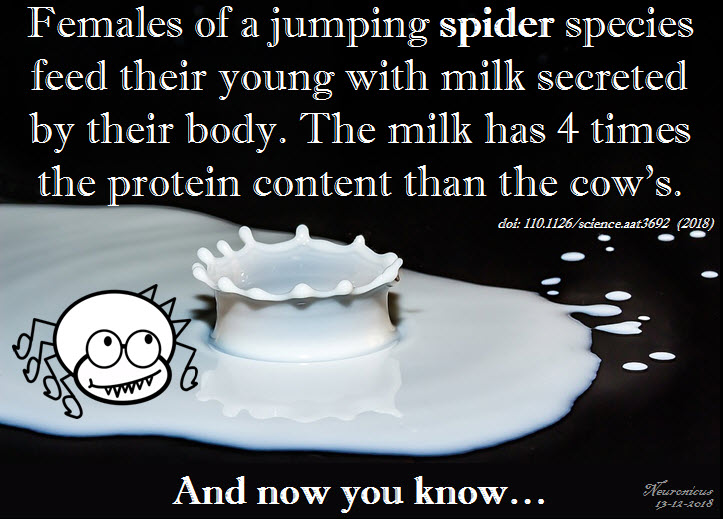In biology, organizing living things in categories is called taxonomy. Such categories are established based on shared characteristics of the members. These characteristics were usually visual attributes. For example, a red-footed booby (it’s a bird, silly!) is obviously different than a blue-footed booby, so we put them in different categories, which Aristotle called in Greek something like species.
Biological taxonomy is very useful, not only to provide countless hours of fight (both verbal and physical!) for biologists, but to inform us of all sorts of unexpected relationships between living things. These relationships, in turn, can give us insights into our own evolution, but also the evolution of things inimical to us, like diseases, and, perhaps, their cure. Also extremely important, it allows scientists from all over the world to have a common language, thus maximizing information sharing and minimizing misunderstandings.

All well and good. And it was all well and good since Carl Linnaeus introduced his famous taxonomy system in the 18th Century, the one we still use today with species, genus, family, order, and kingdom. Then we figured out how to map the DNAs of things around us and this information threw out the window a lot of Linnean classifications. Because it turns out that some things that look similar are not genetically similar; likewise, some living things that we thought are very different from one another, turned out that, genetically speaking, they are not so different.
You will say, then, alright, out with visual taxonomy, in with phylogenetic taxonomy. This would be absolutely peachy for a minority of organisms of the planet, like animals and plants, but a nightmare in the more promiscuous organisms who have no problem swapping bits of DNA back and forth, like some bacteria, so you don’t know anymore who’s who. And don’t even get me started on the viruses which we are still trying to figure out whether or not they are alive in the first place.
When I grew up there were 5 regna or kingdoms in our tree of life – Monera, Protista, Fungi, Plantae, Animalia – each with very distinctive characteristics. Likewise, the class Mammalia from the Animal Kingdom was characterized by the females feeding their offspring with milk from mammary glands. Period. No confusion. But now I have no idea – nor do many other biologists, rest assured – how many domains or kingdoms or empires we have, nor even what the definition of a species is anymore!
As if that’s not enough, even those Linnean characteristics that we thought set in stone are amenable to change. Which is good, shows the progress of science. But I didn’t think that something like the definition of mammal would change. Mammals are organisms whose females feed their offspring with milk from mammary glands, as I vouchsafed above. Pretty straightforward. And not spiders. Let me be clear on this: spiders did not feature in my – or anyone’s! – definition of mammals.
Until Chen et al. (2018) published their weird article a couple of weeks ago. The abstract is free for all to see and states that the females of a jumping spider species feed their young with milk secreted by their body until the age of subadulthood. Mothers continue to offer parental care past the maturity threshold. The milk is necessary for the spiderlings because without it they die. That’s all.
I read the whole paper since it was only 4 pages of it and here are some more details about their discovery. The species of spider they looked at is Toxeus magnus, a jumping spider that looks like an ant. The mother produces milk from her epigastric furrow and deposits it on the nest floor and walls from where the spiderlings ingest it (0-7 days). After the first week of this, the spiderlings suck the milk direct from the mother’s body and continue to do so for the next two weeks (7-20 days) when they start leaving the nest and forage for themselves. But they return and for the next period (20-40 days) they get their food both from the mother’s milk and from independent foraging. Spiderlings get weaned by day 40, but they still come home to sleep at night. At day 52 they are officially considered adults. Interestingly, “although the mother apparently treated all juveniles the same, only daughters were allowed to return to the breeding nest after sexual maturity. Adult sons were attacked if they tried to return. This may reduce inbreeding depression, which is considered to be a major selective agent for the evolution of mating systems (p. 1053).”
During all this time, including during the emergence into adulthood of the offsprings, the mother also supplied house maintenance, carrying out her children’s exuviae (shed exoskeletons) and repairing the nest.
The authors then did a series of experiments to see what role does the nursing and other maternal care at different stages play in the fitness and survival of the offsprings. Blocking the mother’s milk production with correction fluid immediately after hatching killed all the spiderlings, showing that they are completely dependent on the mother’s milk. Removing the mother after the spiderlings start foraging (day 20) drastically reduces survivorship and body size, showing that mother’s care is essential for her offsprings’ success. Moreover, the mother taking care of the nest and keeping it clean reduced the occurrence of parasite infections on the juveniles.
The authors analyzed the milk and it’s highly nutritious: “spider milk total sugar content was 2.0 mg/ml, total fat 5.3 mg/ml, and total protein 123.9 mg/ml, with the protein content around four times that of cow’s milk (p. 1053)”.
Speechless I am. Good for the spider, I guess. Spider milk will have exorbitant costs (Apparently, a slight finger pressure on the milk-secreting region makes the mother spider secret the milk, not at all unlike the human mother). Spiderlings die without the mother’s milk. Responsible farming? Spider milker qualifications? I’m gonna lay down, I got a headache.

REFERENCE: Chen Z, Corlett RT, Jiao X, Liu SJ, Charles-Dominique T, Zhang S, Li H, Lai R, Long C, & Quan RC (30 Nov. 2018). Prolonged milk provisioning in a jumping spider. Science, 362(6418):1052-1055. PMID: 30498127, DOI: 10.1126/science.aat3692. ARTICLE | Supplemental info (check out the videos)
By Neuronicus, 13 December 2018

